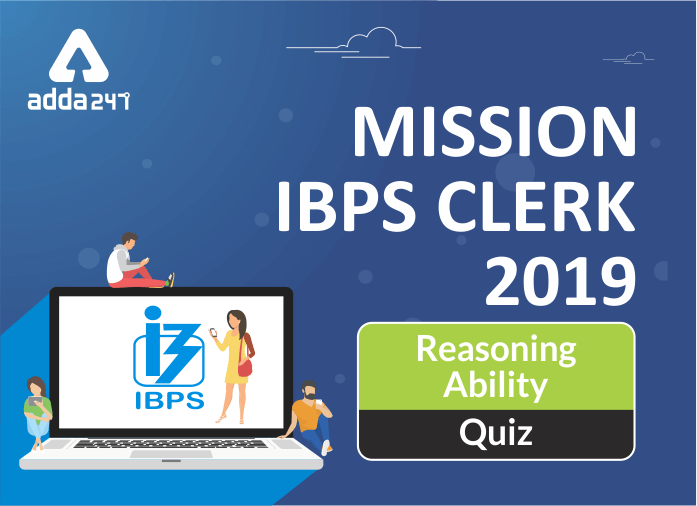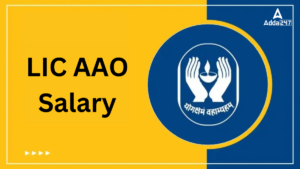Table of Contents
The reasoning being the scoring part can enhance your performance as a whole. All you need to do is clear your basics and be aware of the syllabus of the particular exam you are preparing for. Giving mocks and Quizzes on a regular basis will help you to decode the strategy. Also, the Study Plans go hand in hand with the exam preparations that will take place in the upcoming months. Like the IBPS Clerk Prelims are scheduled in the month of December and we already rolled the study plan for IBPS Clerk. Under the same plan, here is the Quiz for Reasoning, to make sure that you don’t skip any important topic as well as be prepared to face any type of questions in the prelims. IBPS Clerk Reasoning Quiz of 19th September 2019 covers Inequality.
Directions (1-5): In these questions, relationship between different elements is show in the statements. The statements are followed by conclusions. Study the conclusions based on the given statements and select the appropriate answer:
Q1.
Statements: Q≥N<B=U>D≥Y>W<O
Conclusion I: N<U II: U>W
(a) If only conclusion I follows.
(b) If only conclusion II follows.
(c) If either conclusion I or II follows
(d) If neither conclusion I nor II follows.
(e) If both conclusions I and II follow.
S1. Ans(e)
Sol.
I: N<U(True) II: U>W(True)
Q2.
Statements: D>H>I<N>E≥L=Q≤P<X
Conclusion I: E<H II: N≥Q
(a) If only conclusion I follows.
(b) If only conclusion II follows.
(c) If either conclusion I or II follows
(d) If neither conclusion I nor II follows.
(e) If both conclusions I and II follow.
S2. Ans(d)
Sol.
I: E<H(False) II: N≥Q(False)
Q3.
Statements: X≤L≤U>O≥P=S>D≥N=M
Conclusion I: N=O II: N<O
(a) If only conclusion I follows.
(b) If only conclusion II follows.
(c) If either conclusion I or II follows
(d) If neither conclusion I nor II follows.
(e) If both conclusions I and II follow.
S3. Ans(b)
Sol.
I: N=O(False) II: N<O(True)
Q4.
Statements: W>U>C<N=M>K≤L=E≥D
Conclusion I: K<U II: K≥U
(a) If only conclusion I follows.
(b) If only conclusion II follows.
(c) If either conclusion I or II follows
(d) If neither conclusion I nor II follows.
(e) If both conclusions I and II follow.
S4. Ans(c)
Sol.
I: K<U(False) II: K≥U(False)
Q5.
Statements: Q>X<M≤I>Y≥D=F>V≥B
Conclusion I: I>X II: Y≥V
(a) If only conclusion I follows.
(b) If only conclusion II follows.
(c) If either conclusion I or II follows
(d) If neither conclusion I nor II follows.
(e) If both conclusions I and II follow.
S5. Ans(a)
Sol.
I: I>X(True) II: Y≥V(False)
Directions (6-10): In the following questions, the symbols %, &, #, * and @ are used with the following meaning as illustrated below-
‘P@Q’ means ‘P is neither greater than nor equal to Q’
‘P$Q’ means ‘P is neither equal to nor smaller than Q’
‘P%Q’ means ‘P is neither smaller than nor greater than Q’
‘P&Q’ means ‘P is not smaller than Q’
‘P*Q’ means ‘P is not greater than Q’
Now in each of the following questions assuming the given statement to be true, find which of the conclusions given below them is/are definitely true and give your answer accordingly.
Q6.
Statements: Q@P$U*X&M%K$L*R
Conclusions: I. L@K II. X&P
(a) None is true
(b) Only I is true
(c) Only II is true
(d) Either I or II is true
(e) Both are true
S6. Ans. (b)
Sol.
I. L@K(True) II. X&P(False)
Q7.
Statements: X@U%Y$L&P$W*S&V
Conclusions: I. Y$X II. W@U
(a) None is true
(b) Both are true
(c) Only II is true
(d) Either I or II is true
(e) Only I is true
S7. Ans. (b)
Sol.
I. Y$X (True) II. W@U (True)
Q8.
Statements: S*X@O*U%L&P&D$W
Conclusions: I. U$W II. W%U
(a) None is true
(b) Only I is true
(c) Only II is true
(d) Either I or II is true
(e) Both are true
S8. Ans. (b)
Sol.
I. U$W (True) II. W%U(False)
Q9.
Statements: X*U%P@L$T%V&M$Q
Conclusions: I. L$M II. U$T
(a) None is true
(b) Only I is true
(c) Only II is true
(d) Either I or II is true
(e) Both are true
S9. Ans. (b)
Sol.
I. L$M(True) II. U$T(False)
Q10.
Statements: D@M$P%U$T*V%G*H&J
Conclusions: I. M$T II. H&T
(a) None is true
(b) Only I is true
(c) Only II is true
(d) Either I or II is true
(e) Both are true
S10. Ans. (e)
Sol.
I. M$T(True) II. H&T(True)
Directions (11-15): In these questions, relationship between different elements is show in the statements. The statements are followed by conclusions. Study the conclusions based on the given statements and select the appropriate answer:
Q11.
Statements: U>I>X<M≤P<L=E≥R<T
Conclusion I: U>M II: E>M
(a) If only conclusion I follows.
(b) If only conclusion II follows.
(c) If either conclusion I or II follows
(d) If neither conclusion I nor II follows.
(e) If both conclusions I and II follow.
S11. Ans(b)
Sol.
I: U>M(False) II: E>M(True)
Q12.
Statements: W>R=T>Y<M<N≤X=D>F
Conclusion I: D≥N II: W>Y
(a) If only conclusion I follows.
(b) If only conclusion II follows.
(c) If either conclusion I or II follows
(d) If neither conclusion I nor II follows.
(e) If both conclusions I and II follow.
S12. Ans(e)
Sol.
I: D≥N(True) II: W>Y(True)
Q13.
Statements: S≥C>M≤O>L=P>R<T>H
Conclusion I: S>L II: O>T
(a) If only conclusion I follows.
(b) If only conclusion II follows.
(c) If either conclusion I or II follows
(d) If neither conclusion I nor II follows.
(e) If both conclusions I and II follow.
S13. Ans(d)
Sol.
I: S>L(False) II: O>T(False)
Q14.
Statements: X<M=U≥L>J=K>F<G≤R≥Y
Conclusion I: L≤R II: R>L
(a) If only conclusion I follows.
(b) If only conclusion II follows.
(c) If either conclusion I or II follows
(d) If neither conclusion I nor II follows.
(e) If both conclusions I and II follow.
S14. Ans(d)
Sol.
I: L≤R(False) II: R>L(False)
Q15.
Statements: Z>W>T>D≤M<L≥I>O≥P=Q
Conclusion I: M>Q II: D<L
(a) If only conclusion I follows.
(b) If only conclusion II follows.
(c) If either conclusion I or II follows
(d) If neither conclusion I nor II follows.
(e) If both conclusions I and II follow.
S15. Ans(b)
Sol.
I: M>Q(False) II: D<L(True)
If you are preparing for IBPS Clerk Exam, then you can also check out a video for Reasoning below:
You may also like to Read:




 GA Capsule for SBI Clerk Mains 2025, Dow...
GA Capsule for SBI Clerk Mains 2025, Dow...
 The Hindu Review October 2022: Download ...
The Hindu Review October 2022: Download ...
 LIC AAO Salary 2025, Revised Structure, ...
LIC AAO Salary 2025, Revised Structure, ...





